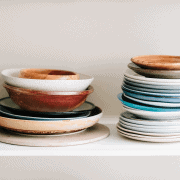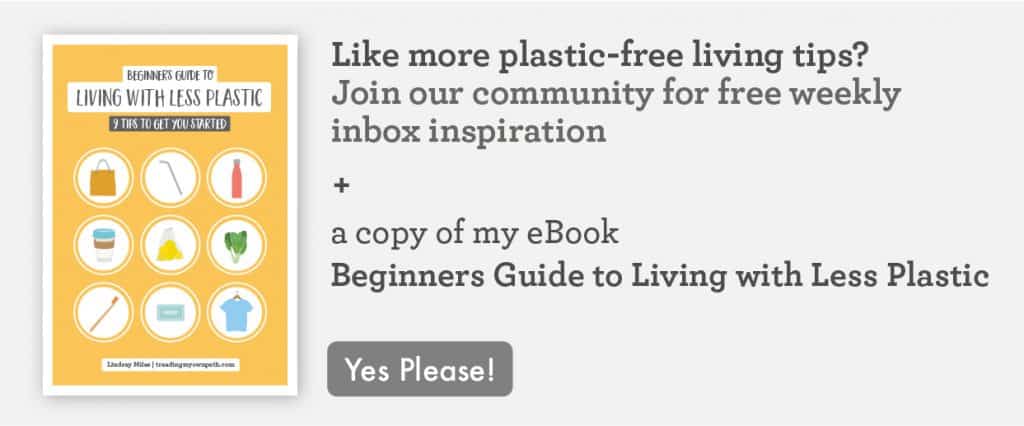7 Plastic-Free Alternatives to Food Wrap
I’ve always found cling-wrap (or glad wrap, or clingfilm, as you may call it) to be unbearable. Even before my plastic-free days, I couldn’t bring myself to use it. I found that it was either unbearably sticky, and would stick to everything except the one thing I actually wanted to wrap, or the opposite: it was so ridiculous non-sticky that it would stick to nothing at all, and definitely not the thing I wanted to wrap.
It gives me great pleasure then, to share with you some alternatives for clingwrap. Let’s rid ourselves of the frustration, and the cursing, and the inner torment. Nobody needs that kind of stress in their lives! (Or is that just me?!)
Of course, the plastic is completely unnecessary too. If you’re not with me on the frustrations, hopefully you are there on the plastic-reducing ;)
As with all single-use plastic items, there are plenty of alternatives. Here’s 7 of my favourites.
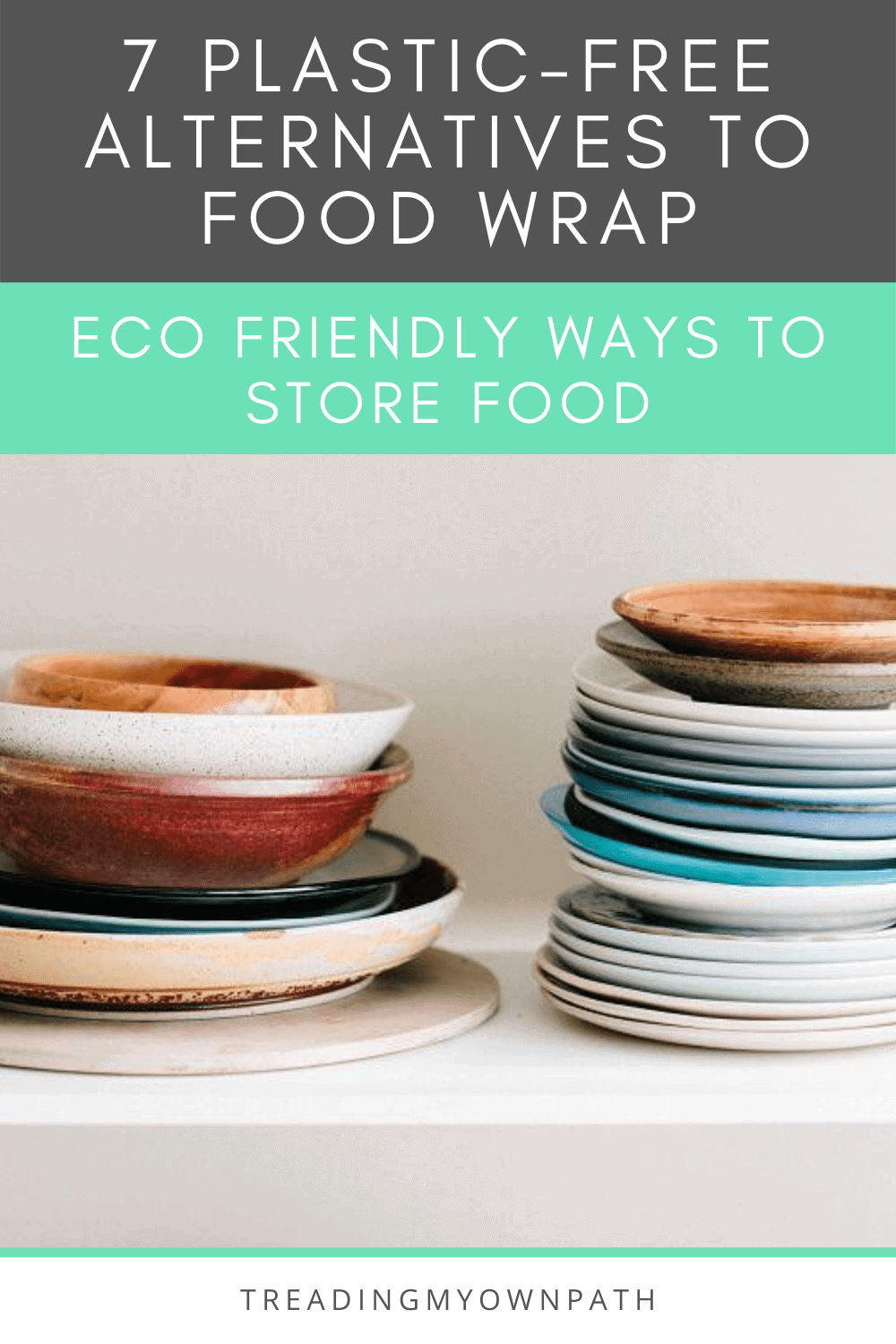
7 Plastic-Free Alternatives to Food Wrap
1. The Bowl on the Plate
I love this option. I love it because it’s simple, doesn’t require any more stuff and suits my laziness. Provided whatever-the-leftovers-are can fit in a bowl, then a plate can go over the top. Job done.
I don’t believe that everything needs to be airtight in a fridge, and the plate-on-the-bowl method is good enough. We don’t have any problems with anything smelling in our fridge, but if that’s something you’re concerned about, popping a small jar of bicarb can help reduce fridge odours.
2. Silicone Lids
![]()
Silicone lids are a fancy alternative to putting a plate on a bowl, but have the bonus of being able to form a seal. They are also heat-tolerant so can be used on hot pans.
Silicone is technically not plastic, and seems to last much longer than plastic. It also seems to be more resistant to heating and high temperatures. On the downside, silicone isn’t recyclable. I’d only opt for silicone if I knew I’d use it regularly, and consider it a purchase for life.
I have 3 silicone lids of varying sizes that were a gift from my mum (similar to this lilypad silicone cover). I do find them useful, and I use them regularly, but I don’t think they are a kitchen essential unless you are a clingwrap fanatic ;)
3. Storage Containers (Tupperware, Pyrex, Glass or Stainless Steel)
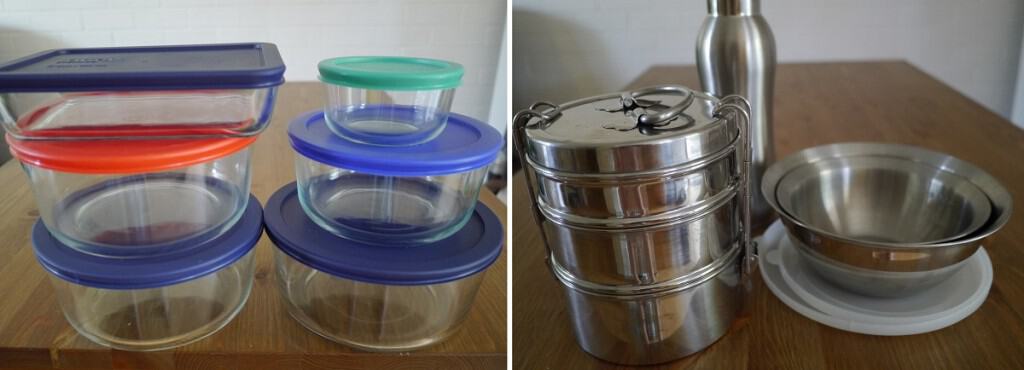
Rather than wrapping a baking dish with cling-wrap, I prefer to decant my leftovers into glass Pyrex storage containers. Any storage container would work, but Pyrex is what I have the most of.
The great thing about Pyrex (and to some extent, stainless steel) is that it is oven-proof, so if you want to re-heat the leftovers the following day, simply remove the lid and pop in the oven. Putting the original container back in the oven tends to bake on the food, making it much harder to clean.
Whilst I don’t recommend buying new plastic storage containers, if you’re new to plastic-free living or zero waste, you might already have a heap of old ones – in which case, use them. Over time you’ll be able to repurpose and donate and they will eventually break, and you can replace with better alternatives.
4. Glass Jars
Glass jars are the mainstay of the zero waste movement, and for good reason – they are useful for almost everything! Glass jars are great for most leftovers. We use them for chopped veggies, roasted veggies, pasta sauce, curry or dahl, rice, sauces… anything that doesn’t have a structure (so layered lasagne might not work great).
The great thing about glass jars is there’s never a shortage, and they are easy to come buy for free. They also come in every imaginable size, and are particularly helpful for portioning food.
5. Beeswax (and other Wax) Food Wraps
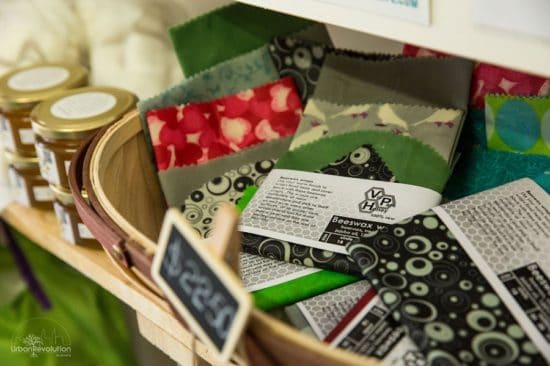
Beeswax wraps, made by by neighbours at Vic Park Honey and sold by my friend Jo in her Urban Revolution store.
Beeswax food wraps are made from cloth that has been coated in beeswax, often with extra additives like jojoba oil and pine rosin (colophony) to make them supple. They can be used in place of cling wrap to cover bowls and wrap food.
Vegan food wraps that use soy and candelilla wax (rather than beeswax) are also coming onto the market.
With both types, they are only suitable for hand washing and not machine washing (the wax will melt at high temperatures). They are not suitable for meat or fish, or wrapping hot food. In time the wax may be lost but they are very easy to re-coat.
In my experience, beeswax food wraps are expensive to buy and cheap to make. If you’re on a budget, I’d recommend making your own. By making your own you can choose the sizes that are most practical for your needs, too. However, if you’re not the crafty type or don’t have the time, supporting local independent businesses is just as good.
6. Sandwich Pockets
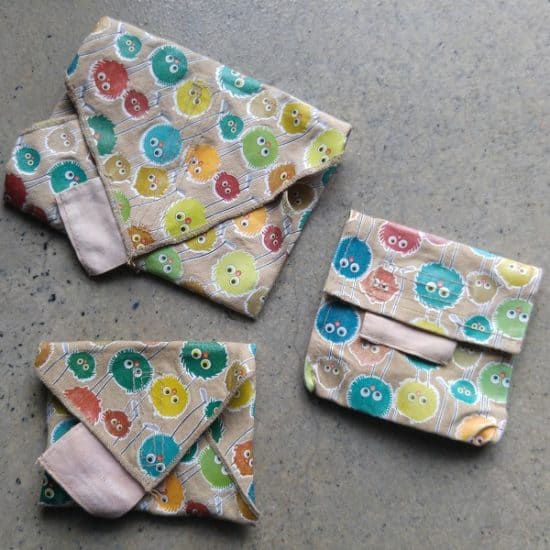
Sandwich pockets are made of fabric that has been coated to make it waterproof. In contrast to beeswax and other wax wraps, these are machine washable. The coating is often some kind of plastic, but on the plus side, they are reusable and will not need to be recoated.
The fabrics and coatings vary brand by brand. I would avoid PVC as this plastic contains phthalates, which are known to be detrimental to human health. Some use polyester and others use plant-based plastic which are stated to be biodegradable when they wear out. I’ve had 4myearth sandwich pockets (the ones in the image – which are cotton with a plant-derived plastic lining) since 2012 and they have lasted very well.
These sandwich pockets will help retain moisture and prevent food drying out, but they do not seal and are not airtight, so are better for short term use.
7. Parchment Paper and/or Foil
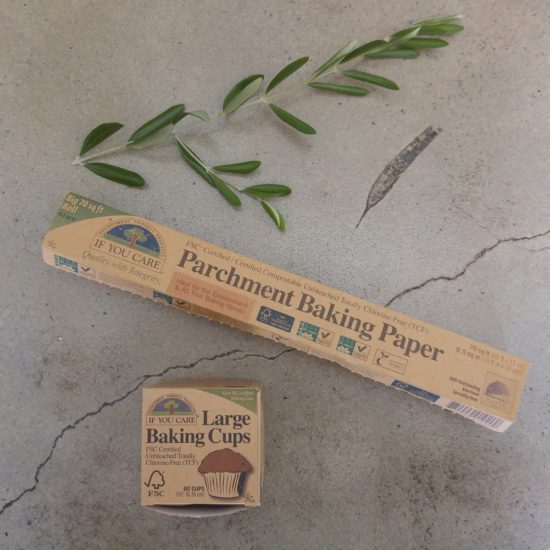
Not a zero waste option, but a plastic-free option nonetheless. Both can be used to wrap items individually, or they can be used together. Wrapping meat or fish in paper and then foil is recommended as a way to freeze these without getting freezer burn.
I use the If You Care brand of parchment paper – it is FSC-certified and unbleached. It has a silicone lining but is certified compostable, and I have successfully composted this paper at home. They also produce 100% recycled aluminium foil.
Aluminium foil can be washed and reused before being recycled. If you’re careful, you will be able to wash and re-use foil a number of times before recycling it. Yes, it can be recycled – save it up until you have enough to form a ball about the size of an Easter egg and pop it in your regular recycling bin.
Now I’d love to hear from you! Clingwrap: friend or foe?! Which of these solutions is your favourite? Any other solutions to suggest? Anything you’ve tried that didn’t work that you want to warn us about? Anything else to add? Tell all in the comments below!
Disclaimer: This post contains some affiliate links which means if you click a link and choose to purchase a product, I may be compensated a small amount at no extra cost to you. The links are included to give you more information about some of the products that I own and use. As always, I’d always suggest making do and shopping second-hand before buying new.

